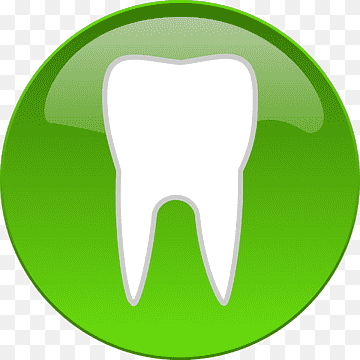Balanoposthitis, a common condition affecting males, is characterized by inflammation of the glans penis and the foreskin. While it may seem like a minor issue, balanoposthitis can cause discomfort and lead to complications if left untreated. This article aims to provide a comprehensive understanding of balanoposthitis, including its symptoms, causes, and diagnosis. Additionally, it will explore various treatment options, prevention strategies, and lifestyle changes that can help individuals cope with this condition. By delving into these topics, readers will gain valuable insights into balanoposthitis and be equipped with the knowledge necessary to effectively manage and prevent it.
1. Understanding Balanoposthitis: Symptoms, Causes, and Diagnosis
Balanoposthitis is a condition that affects the male genitalia, specifically the penis. It refers to the inflammation of the glans (head of the penis) and the foreskin (prepuce). This condition is relatively common and can cause discomfort and pain if left untreated. Understanding the symptoms, causes, and diagnosis of balanoposthitis is crucial for timely treatment and prevention of complications.
Symptoms of balanoposthitis vary depending on the severity of the inflammation. Common signs include redness, swelling, and soreness of the glans and foreskin. Patients may also experience itching, a burning sensation, or pain during urination. In some cases, a discharge, either clear or white, may be present. It is important to note that these symptoms can also be indicative of other genital infections, making a proper diagnosis vital.
Several factors can contribute to the development of balanoposthitis. Poor genital hygiene is often a leading cause. Inadequate cleaning of the penis can lead to the accumulation of smegma, a substance that can harbor bacteria and irritate the delicate skin. Other causes include fungal or bacterial infections, such as candidiasis or sexually transmitted infections (STIs) like gonorrhea or chlamydia. Certain skin conditions, such as psoriasis or lichen planus, can also trigger balanoposthitis.
Diagnosing balanoposthitis typically involves a physical examination by a healthcare professional. The doctor will inspect the affected area, looking for signs of inflammation, discharge, or any other abnormalities. They may also inquire about the patient
2. Treatment Options for Balanoposthitis: Effective Strategies and Prevention Tips
Treatment Options for Balanoposthitis: Effective Strategies and Prevention Tips
When it comes to balanoposthitis, prompt and appropriate treatment is essential to alleviate symptoms, prevent complications, and ensure a speedy recovery. The treatment approach may vary depending on the severity of the condition, the underlying cause, and individual factors. Here, we will explore some effective strategies and prevention tips for managing balanoposthitis.
1. Hygiene Practices: Maintaining good genital hygiene is crucial for preventing and treating balanoposthitis. Regularly washing the penis with warm water and mild soap can help remove irritants and bacteria, reducing the risk of infection. However, it is important to avoid using harsh soaps, scented products, or excessive scrubbing, as these can further irritate the sensitive skin.
2. Topical Medications: In mild cases of balanoposthitis, topical medications can often provide relief and promote healing. Antifungal creams or ointments containing clotrimazole, miconazole, or ketoconazole may be recommended if a fungal infection is suspected. Antibacterial creams or ointments containing mupirocin or fusidic acid may be prescribed for bacterial infections. These medications should be applied as directed by a healthcare professional, usually for a specified duration.
3. Oral Medications: In more severe or recurrent cases of balanoposthitis, oral medications may be necessary. If a bacterial infection is present, oral antibiotics such as penicillin or erythromycin may be prescribed. If a fungal infection is the cause, oral antifungal medications like flu
3. Living with Balanoposthitis: Coping Strategies and Lifestyle Changes
Living with Balanoposthitis can be challenging, but with the right coping strategies and lifestyle changes, individuals can effectively manage the condition and improve their quality of life. Here are some tips and recommendations for those living with Balanoposthitis:
1. Maintaining proper hygiene: Good hygiene practices are crucial in managing Balanoposthitis. Regularly wash the genital area with mild soap and warm water, ensuring thorough cleaning of the foreskin and glans. Avoid using harsh soaps or chemicals that may irritate the area. After washing, gently pat the area dry, as excessive moisture can contribute to the growth of bacteria or fungi.
2. Avoiding irritants: Identify and avoid potential irritants that may trigger or exacerbate Balanoposthitis symptoms. This may include certain types of soaps, detergents, fabrics, perfumed products, or personal care items. Opt for hypoallergenic or fragrance-free alternatives to minimize irritation.
3. Wearing loose-fitting clothing: Tight clothing or synthetic fabrics can cause friction and trap moisture, leading to irritation and increased risk of infection. Choose loose-fitting cotton underwear and breathable clothing to allow proper air circulation and reduce irritation.
4. Practicing safe sexual habits: Balanoposthitis can sometimes be caused by sexually transmitted infections (STIs). To prevent recurrent episodes, it is important to practice safe sexual habits, such as using condoms, limiting sexual partners, and getting regular STI screenings.
5. Avoiding self-medication: While over-the-counter creams or ointments may provide temporary relief, it is essential to consult a healthcare professional
